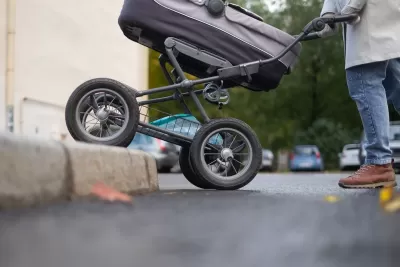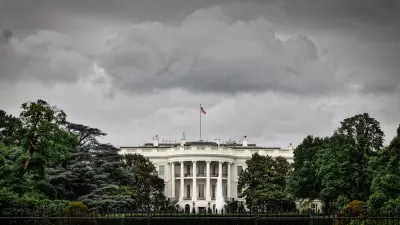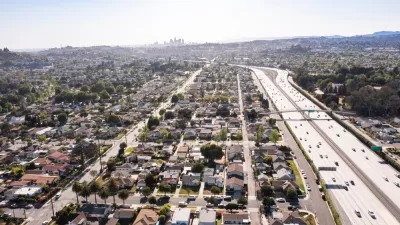The presence and quality of sidewalks, curb cuts, and other basic elements of infrastructure can speak to much more than just economic decisions.

In a piece published on Strong Towns, Tiffany Owens Reed lyrically describes another way of looking at cities and infrastructure: as symbols.
Consider, for example, the extremely wide lanes we have in many neighborhoods here in Waco. At first glance, this might just be a straightforward design issue: such wide lanes are extremely likely to induce speeding, making what should be a public space too dangerous for other people, especially children, and turning it into a domain for cars and their drivers. This straightforward analysis is important and valuable, but what happens if we think about it symbolically? Then the overly wide residential street becomes a symbol of our culture’s unexamined commitment to cars and a conversation starter about the cost of this commitment, specifically the way they are turning our neighborhoods into traffic corridors, not communities.
For Reed, infrastructure can communicate a community’s values and priorities. What does a lack of sidewalks say about who is welcome in a neighborhood? “Or consider the fact that there’s no coffee shop I can walk to and meet up with friends. Technically, this is a zoning issue; nothing more to it. But what do those zoning rules symbolize? What do they tell us about the patterns of life we believe belong in a neighborhood? What does they communicate about what we value?”
FULL STORY: The Symbols in the City

Alabama: Trump Terminates Settlements for Black Communities Harmed By Raw Sewage
Trump deemed the landmark civil rights agreement “illegal DEI and environmental justice policy.”

Study: Maui’s Plan to Convert Vacation Rentals to Long-Term Housing Could Cause Nearly $1 Billion Economic Loss
The plan would reduce visitor accommodation by 25% resulting in 1,900 jobs lost.

Planetizen Federal Action Tracker
A weekly monitor of how Trump’s orders and actions are impacting planners and planning in America.

Waymo Gets Permission to Map SF’s Market Street
If allowed to operate on the traffic-restricted street, Waymo’s autonomous taxis would have a leg up over ride-hailing competitors — and counter the city’s efforts to grow bike and pedestrian on the thoroughfare.

Parklet Symposium Highlights the Success of Shared Spaces
Parklets got a boost during the Covid-19 pandemic, when the concept was translated to outdoor dining programs that offered restaurants a lifeline during the shutdown.

Federal Homelessness Agency Places Entire Staff on Leave
The U.S. Interagency Council on Homelessness is the only federal agency dedicated to preventing and ending homelessness.
Urban Design for Planners 1: Software Tools
This six-course series explores essential urban design concepts using open source software and equips planners with the tools they need to participate fully in the urban design process.
Planning for Universal Design
Learn the tools for implementing Universal Design in planning regulations.
Caltrans
Smith Gee Studio
Institute for Housing and Urban Development Studies (IHS)
City of Grandview
Harvard GSD Executive Education
Toledo-Lucas County Plan Commissions
Salt Lake City
NYU Wagner Graduate School of Public Service





























